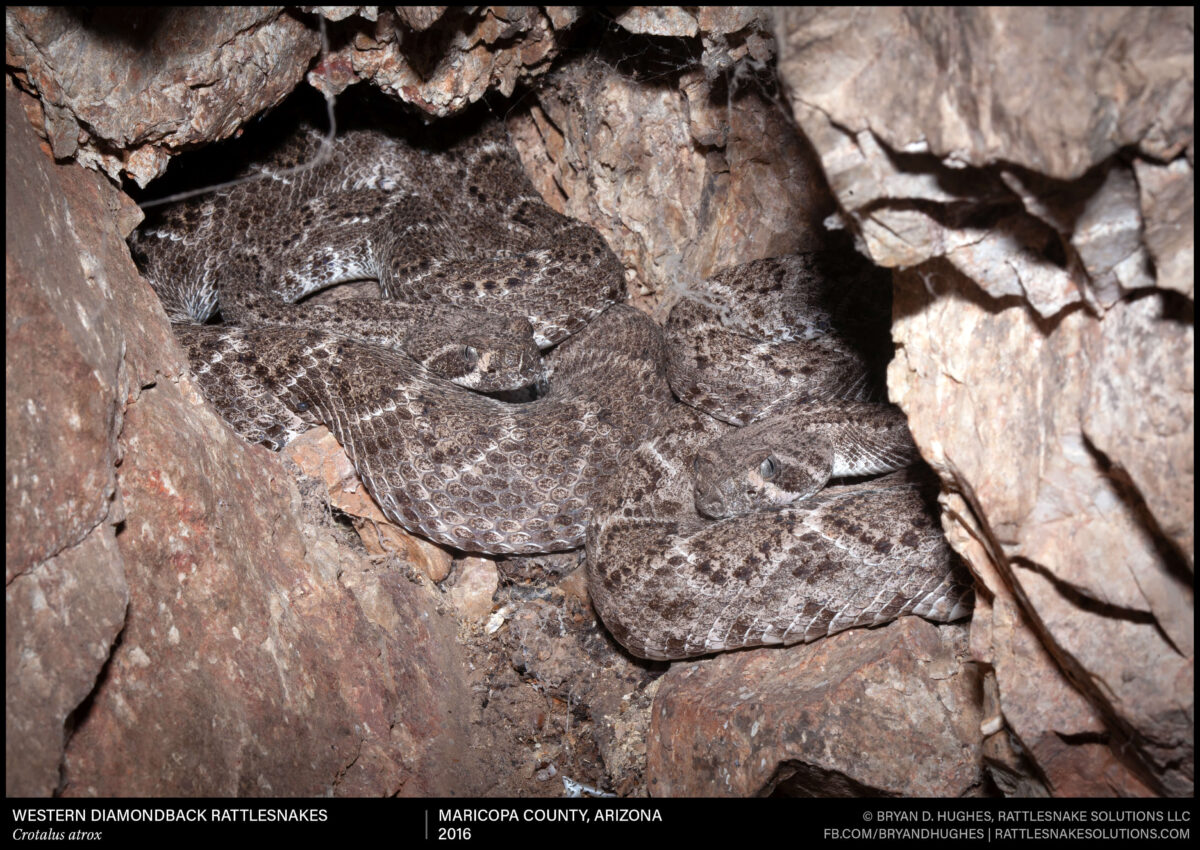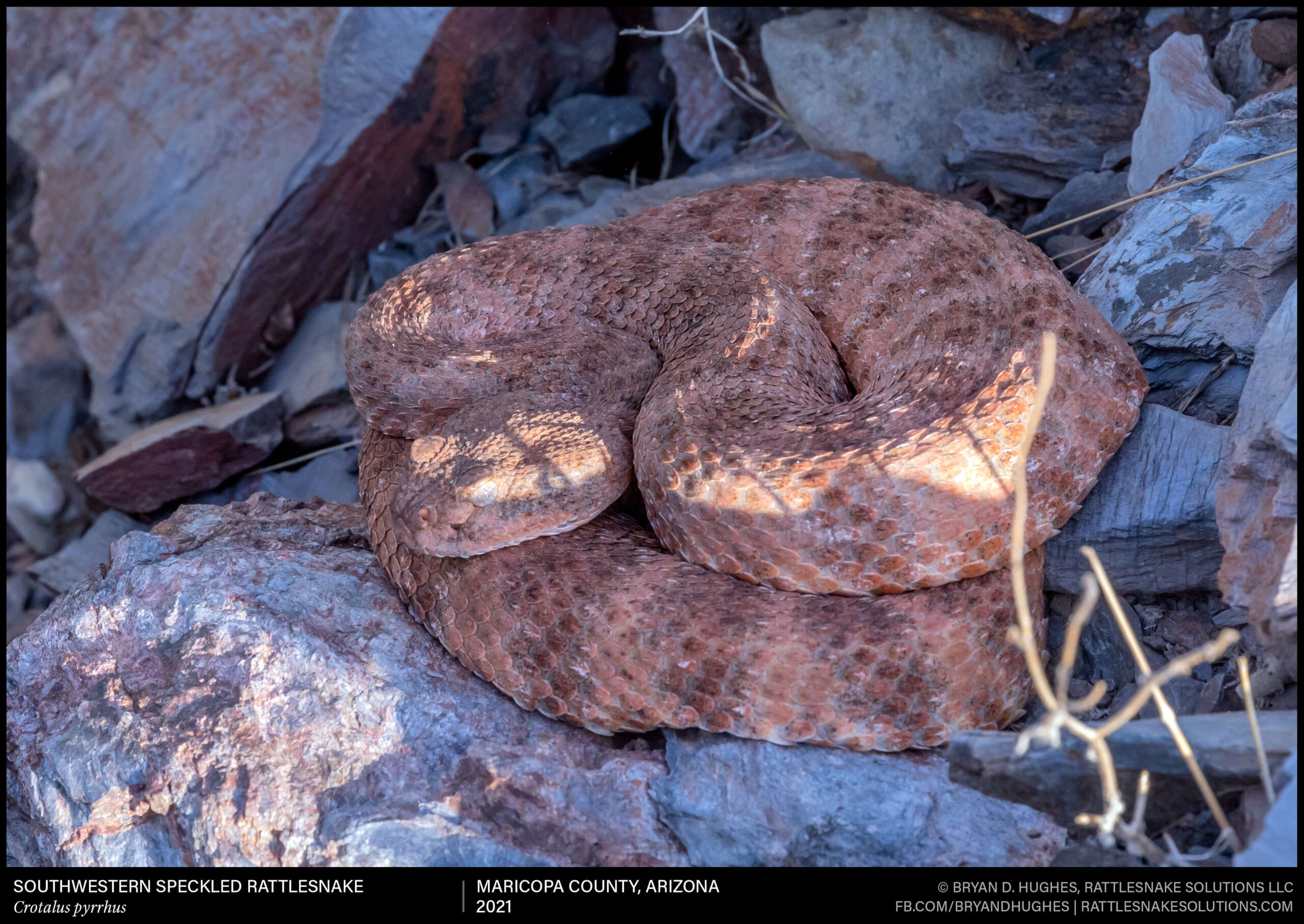This Southwestern Speckled Rattlesnake was resting on a small rise just below its aestivation den in Phoenix. She’s pregnant, and will stayed in the area most of the summer before moving up the hill to a rocky slope to give birth.

This Southwestern Speckled Rattlesnake was resting on a small rise just below its aestivation den in Phoenix. She’s pregnant, and will stayed in the area most of the summer before moving up the hill to a rocky slope to give birth.

A group of Western Diamondback Rattlesnakes aestivating during the lethal Arizona summer heat in the summer of 2016. In this cave, they can stay consistently cooler than the 115˚F+ daily temperatures outside and survive until monsoon rain brings relief.

Tiger Rattlesnake resting outside its aestivation den on a hot Phoenix summer night. These snakes are quite common in much of the area, though most hikers will never see one due to their secretive nature and effective camouflage. Even of those reported, a large number of them … if not most of them, end up being misidentified Speckled Rattlesnakes.

This Western Diamondback Rattlesnake was aestivating on a cool, extremely dry May morning. This drainage used to be rich with life, but recent fires fueled by invasive grasses have changed it into a charred, open oven. A few animals remain – the most abundant life to spring up after the event: globe chamomile. Hopefully this snake found a way to survive.

A pink Southwestern Speckled Rattlesnake resting in rocks near the Rattlesnake Solutions office in the first morning sun, This snake uses the same area each year, showing up around June and leaving once aestivation is no longer necessary during the monsoon. Where it goes in the cooler months is unknown, but the tight site fidelity of this species is nearly absolute in most cases. This was in 2021, and if she survives another year, there is no doubt we’ll see her again in the same spot in 2025.
